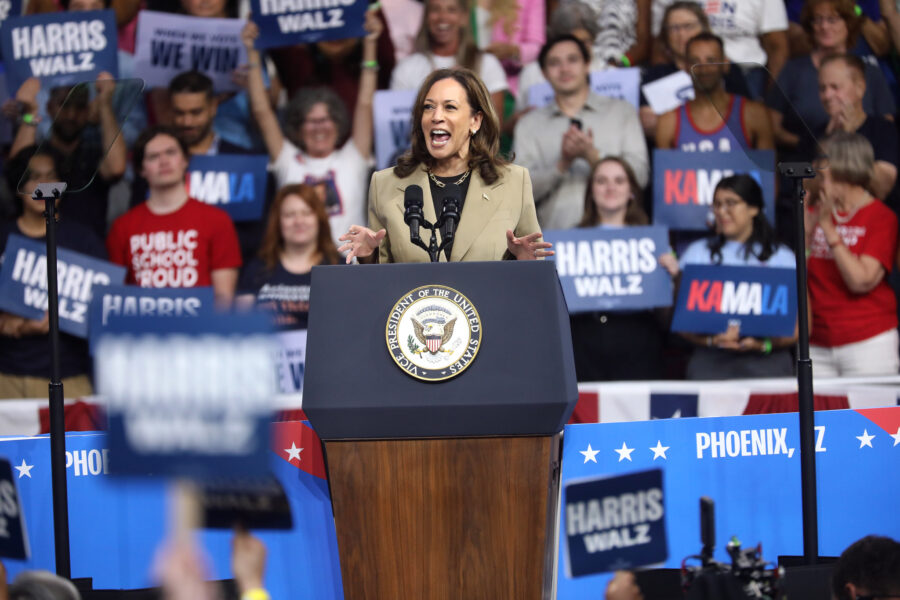As Americans head into the 2024 election, the stakes could not be higher for working- and middle-class families. Vice President Kamala Harris is delivering a comprehensive plan aimed at bringing down the cost of living for millions of Americans. From healthcare to housing, Harris has put forward specific, actionable policies designed to ease financial burdens that disproportionately affect working families. In sharp contrast, Donald Trump’s Project 2025 proposes an economic overhaul that favors the wealthy while rolling back critical protections and benefits for middle-class households.
Harris’s Concrete Plans to Lower Costs
Kamala Harris has been a consistent advocate for working families, and her 2024 platform builds on the policies she and President Biden have already implemented. The Inflation Reduction Act, for example, has brought down prescription drug prices, capped insulin costs at $35 a month for seniors, and made energy-efficient home improvements more affordable. These are tangible ways Harris has reduced everyday costs, and her future policies promise to go further.
Harris is also focused on tackling rising housing prices. She supports initiatives to expand access to affordable housing through targeted homeownership programs and renter assistance. This approach is a direct response to the nationwide housing affordability crisis, which continues to push families further from economic stability. Another cornerstone of Harris’s economic plan is her advocacy for universal pre-K and debt-free community college programs. By expanding access to education, Harris aims to reduce one of the most significant financial burdens on American families.
Moreover, Harris plans to expand access to affordable childcare, a sector that has been under strain for years, leaving parents—especially women—struggling to stay in the workforce. Her proposal for paid family leave will also help ease the economic challenges faced by working parents, giving them more flexibility without sacrificing their income. These initiatives represent a holistic approach to tackling the everyday cost challenges that so many Americans face.
Project 2025: A Blueprint for Economic Inequality
In contrast to Harris’s detailed and targeted policies, Donald Trump’s Project 2025 represents a return to regressive, pro-corporate tax policies that will disproportionately harm working-class families. The plan emphasizes sweeping tax cuts for corporations while raising taxes for middle-class families by eliminating key deductions like the Earned Income Tax Credit (EITC) and the Child Tax Credit (CTC). For instance, a family of four earning $90,000 annually could face tax hikes of up to $6,300 under Project 2025’s proposed changes. Instead of easing the financial burden on middle-class families, the plan concentrates economic benefits on the wealthiest Americans.
Even more troubling are the labor reforms outlined in Project 2025. The plan proposes weakening overtime protections, leaving fewer workers eligible for additional pay for extra hours worked. Simultaneously, Project 2025 aims to gut labor rights by dismantling the National Labor Relations Board (NLRB), making it easier for employers to suppress unionization efforts and weakening protections for collective bargaining. At a time when labor unions are experiencing a resurgence in key industries, this rollback would hit working families the hardest, diminishing their bargaining power in an already challenging economy.
Moreover, Project 2025 proposes scaling back child labor protections, a move that could see minors working in hazardous conditions like meatpacking plants. This reversal comes at a time when child labor violations are on the rise, threatening to roll back decades of progress in worker safety and protections.
The Consumer Financial Protection Bureau in the Crosshairs
Project 2025 doesn’t stop at undermining labor protections. It also seeks to abolish the Consumer Financial Protection Bureau (CFPB), an agency that has delivered over $19 billion in relief to consumers harmed by predatory lenders and fraudulent financial practices. By eliminating this agency, Project 2025 would remove one of the most significant protections available to working Americans, leaving them vulnerable to exploitation by large financial institutions. The result? Increased financial instability for millions of households already struggling to make ends meet.
Additionally, the proposal includes scaling back investments in critical infrastructure and clean energy projects—key sectors that have been driving job growth and economic revitalization in blue-collar industries. By reversing these investments, Project 2025 would halt progress in manufacturing construction and other sectors that provide well-paying jobs to middle-class Americans.
Undermining Economic Security
One of the most alarming aspects of Project 2025 is its plan to force the Federal Reserve to abandon its focus on full employment. The Fed’s dual mandate—ensuring stable prices and maximizing employment—has been a crucial factor in fostering job growth and rising wages under the Biden-Harris administration. Project 2025’s shift in priorities would likely result in a weaker labor market, making it more difficult for workers to negotiate better wages or switch jobs, further undermining their economic security.
A Clear Choice for Voters
As the election draws near, the contrast between the two candidates could not be more evident. Kamala Harris’s proposals prioritize lowering costs and supporting the middle class with concrete plans for healthcare, housing, and labor rights. Donald Trump’s Project 2025, on the other hand, threatens to dismantle decades of progress for working families, all while concentrating more wealth at the top.
This election will determine whether Americans can count on policies that lower costs and protect their rights, or whether they will be subjected to an agenda that places corporate profits above the needs of everyday families. The choice is clear—Harris’s detailed plan for economic fairness versus Trump’s reckless Project 2025, which would push the middle class further into economic instability.






